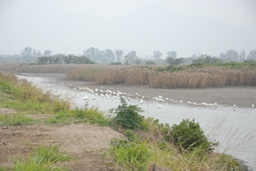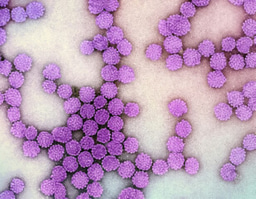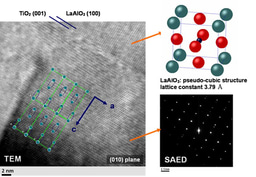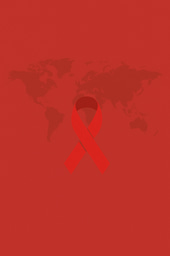Substance use and destigmatization: SDG 3 and Me interview with Paige Lemen, PhD candidate
Published in Public Health

-
What SDG3 target(s) is your work and the work of the organization most closely aligned with?
Among the targets listed, we are most aligned with the mission to “Strengthen the prevention and treatment of substance abuse,” however, we also focus on reducing the stigma of drug use as well. Not all of those who use drugs, including opioids, have a substance use disorder. Not all who use opioids outside of doctor’s orders are “abusing” the drug. Who determines what is considered abuse anyways?
Substance use disorder is a spectrum. It can range from healthy and responsible drug use to uncontrolled and chaotic drug use to a full disorder. Oftentimes, this depends on the individual’s quality of life. For example, someone who has all their needs met and can pay all of their bills is more likely to be able to control their drug use compared to someone who is experiencing homelessness, abuse and trauma, exploitation or some other issue that many of our most vulnerable people in our society experience.
Instead of policing drug use and taking a “punish and control” approach, we need to be focusing on the underlying causes that lead to people using drugs in a risky way in the first place.
-
Do you feel there is something missing from the specific SDG 3 targets of the areas you are most interested in?
We want to show the importance of including the experiences and voices of those who use drugs. As our paper mentions, “Those with lived and living experience have unique insight into the complexities of overdose and the effectiveness of naloxone. They can provide valuable information on how a higher dose formulation may impact their ability to respond to an overdose. Additionally, they can offer insight into other factors that may contribute to overdose, such as polysubstance use or lack of access to harm reduction services. By listening to those with lived and living experience, we can gain a better understanding of the challenges and barriers faced by PWUD [people who use drugs] and make more informed decisions about how to address overdose in a way that is effective, equitable, and inclusive.”
Another important target for us is to bridge the gap between researchers and those working “on the ground,” as in directly with drug users and those with substance use disorder (SUD), or drug users themselves. From personal experience, I have worked with scientists who struggle to design studies that provide results that could be translated to treatment and prevention in humans, especially within our current society and policy landscape. This is because they lack the knowledge of how drug use and SUD occur in real life.
I’ve also worked with harm reductionists and drug users who could benefit, either in their work or personally, from understanding the science of drugs and SUD, or even how the scientific process itself, research, and funding works.
-
Who (or what groups) would you like to work with, or would like to be in contact with, to push forward your ideas/projects?
As a PhD candidate, I’ll soon be Dr. Lemen and want to use my training in biomedical sciences to improve the lives of those who use drugs and those with SUD. However, I’m not sure in which way I’d like to go about that; scientific advisor, post-doc (continue doing the research I do now in academia), industry, or maybe even scientific journalism.
Academia needs SUD researchers with real world experience and have undergone the unlearning process of all the drug war propaganda that many scientists don’t even recognize they’ve fallen for as well. In that case, I’d love to work with like-minded researchers that have funding for post-docs.
I’m also interested in getting more involved with policy work or journalism in this same field. In that case, I’d love to connect with the Drug Policy Alliance and the Harm Reduction Coalition. However, it is possible to do both and one does compliment the other!
Follow the Topic
-
Harm Reduction Journal

This journal publishes research and commentary on approaches diminishing the harm of stigmatization, marginalization and criminalization of public health, human rights and social justice issues, as well as rebuking the de facto criminalization of marginalized and stigmatized communities.
Related Collections
With Collections, you can get published faster and increase your visibility.
Repairable damage: harm reduction and US policy
Recent shifts in US policy and the approach to public health have placed renewed pressure on communities that already face significant health and social challenges. Policy decisions increasingly prioritize criminalization or abstinence-based strategies over interventions that have been consistently shown to reduce harm. These choices reflect a broader trend of sidelining empirical evidence, with real-world consequences for public health.
As a result, morbidity and mortality have increased among people who use drugs, experience homelessness, or who are involved in the US criminal justice system. Rates of preventable illness and infectious disease are also rising. Rhetoric and stigma further undermine public trust and discourage engagement with health services, disproportionately affecting marginalized populations.
Harm Reduction Journal has commissioned a collection of articles to highlight how evidence-based harm reduction strategies – grounded in science, dignity and practical outcomes – can inform more effective, humane public health responses.
This Collection supports and amplifies research related to SDG 3, Good Health and Well-Being, SDG 5, Gender Equality, SDG 10, Reduced Inequalities, and SDG 16, Peace, Justice and Strong Institutions.
All submissions in this collection undergo the journal’s standard peer review process. Similarly, all manuscripts authored by a Guest Editor(s) will be handled by the Editor-in-Chief. As an open access publication, this journal levies an article processing fee (details here). We recognize that many key stakeholders may not have access to such resources and are committed to supporting participation in this issue wherever resources are a barrier. For more information about what support may be available, please visit OA funding and support, or email OAfundingpolicy@springernature.com or the Editor-in-Chief.
Publishing Model: Open Access
Deadline: Aug 18, 2026






Please sign in or register for FREE
If you are a registered user on Research Communities by Springer Nature, please sign in